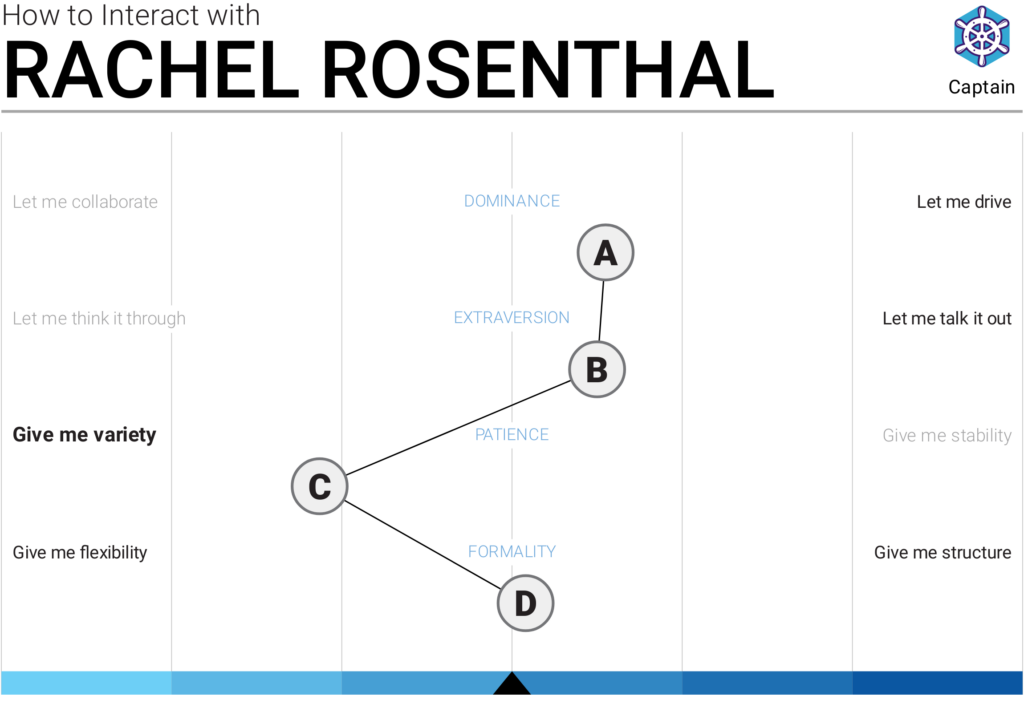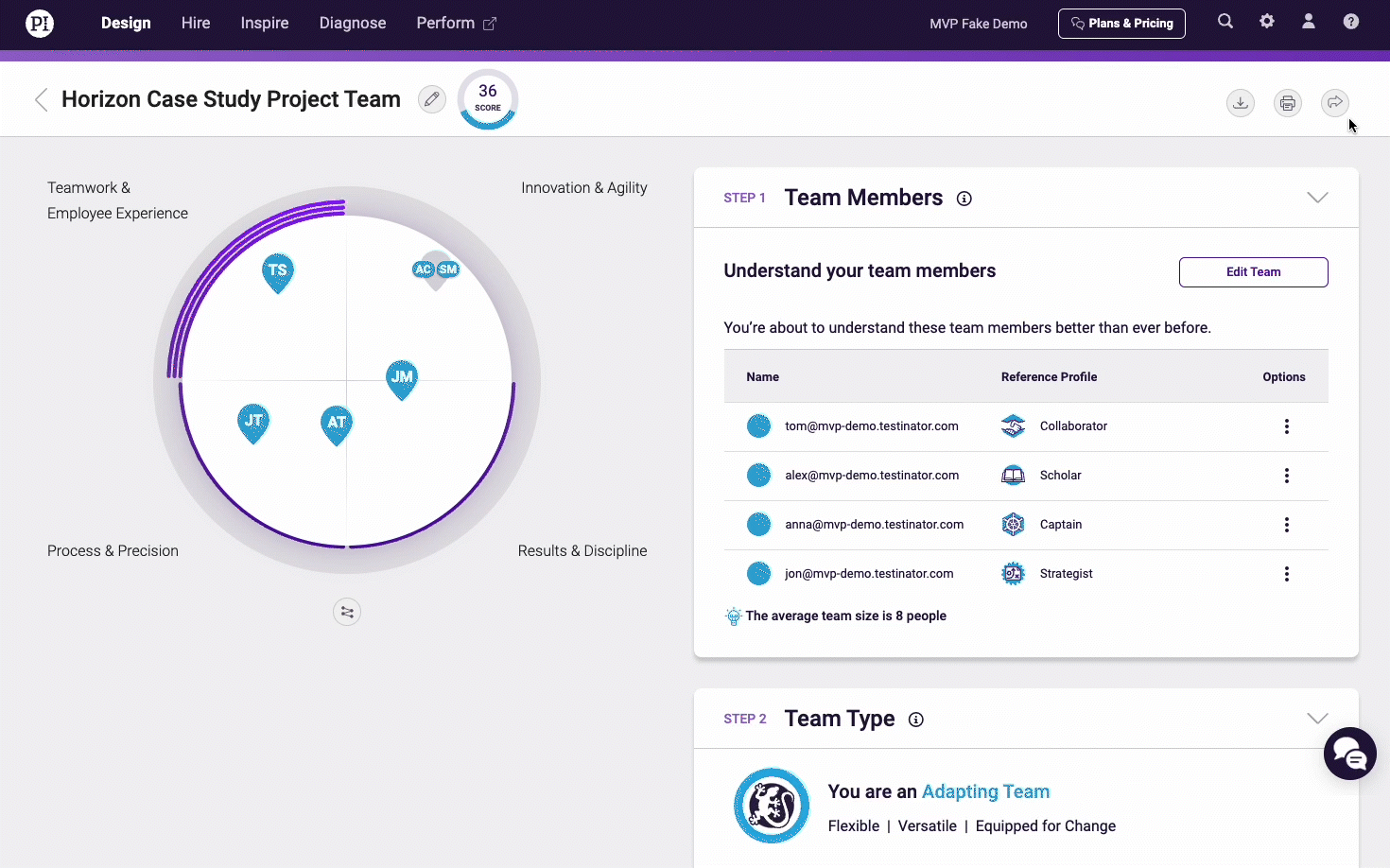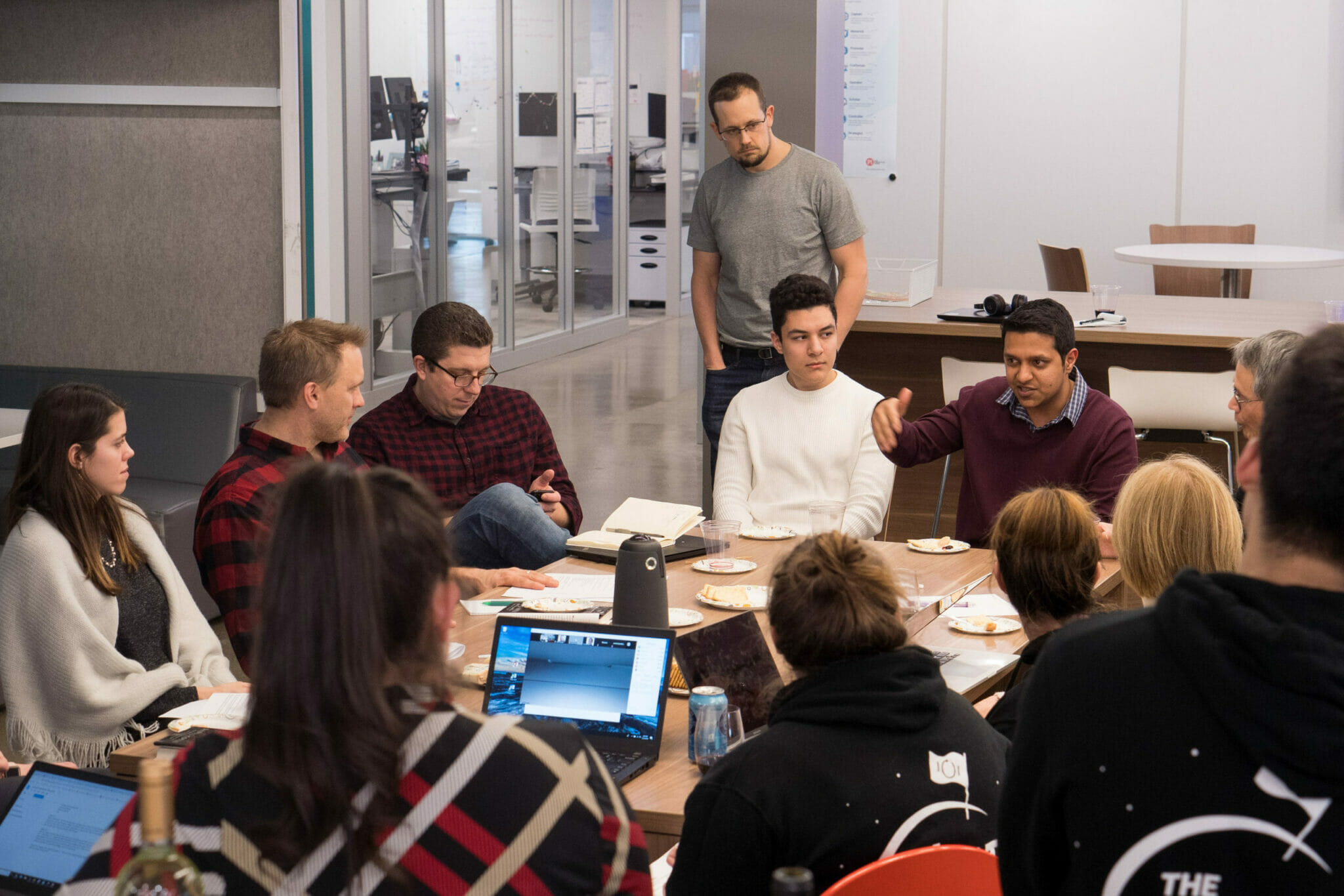Picture this: It’s 7 am. The birds are chirping. I wake up with a smile, take a deep breath, and slowly ease into my day.
*Record player screeches*
That is NOT how my life goes. Whereas other people may start their mornings with a feeling of zen, my mind is supercharged from the second I wake up. Whether I’m running through personal to-dos, troubleshooting work issues, or chugging a cup of coffee, my day is more akin to a tropical storm.
My name is Rachel, and I am a Captain. Here at The Predictive Index, I’m the Demand Generation Lead on our marketing team. In addition to working on content like our monthly webinar series, I engage with vendors on various advertising and event needs. There’s so much more that I do, but I’m keeping character count in mind, and we’ve got a lot to talk about.
Let’s start by breaking down my behavioral profile.
My behavioral pattern
I took the PI Behavioral Assessment in 2019, back when I first applied for an Event Specialist position at The Predictive Index.
The assessment reveals a person’s natural workplace behaviors according to four key drives:
- Dominance (A) – the drive to exert one’s influence on people or events
- Extraversion (B) – the drive for social interaction with other people
- Patience (C) – the drive for consistency and stability
- Formality (D) – the drive to conform to rules and structure
Here are my results:

Unfamiliar with PI? Our employees and clients refer to this graph as their Behavioral Pattern. Each letter maps back to one of the four drives: The farther right the letter, the higher that drive; the farther left, the lower it is. If the letter is right in the middle, it means that drive is “situational” and may lean in either direction depending on the context of the work.
All patterns are beautiful—and higher does not mean “better.” Instead, we use this behavioral data to understand how we’re different from (or similar to) our peers, so we can find new ways to communicate, collaborate, and support one another.
If you’re feeling a little lost in the science, no worries. With PI, every specific Behavioral Pattern maps back to one of 17 Reference Profiles. Think of your pattern as your home address, and your profile as your zip code! By understanding Reference Profiles, you can understand any colleague, manager, or direct report at a glance.
Give managers the tools they need to drive performance
The all-in-one platform for managing meetings, feedback, goals, and employee recognition, supercharged with behavioral insights.
My Reference Profile is a Captain.
A Captain is a problem solver who likes change and innovation while controlling the big picture.
I find that my Reference Profile description is on point. Being on the marketing team, I get to collaborate cross-functionally on internal projects, work closely with folks of various leadership levels and specialties, and manage a team of vendors who support our goals.
While much of this work is team-centric and based on larger initiatives, I get to drive plenty of projects, which fills my cup as a high dominance (aka “high A,” in PI lingo) individual. Even when I’m performing tasks as part of someone else’s initiative, I never feel boxed in; there’s always an opportunity to collaborate, brainstorm, and own my scope of work.
Managing a team of vendors gives me the chance to represent PI, but I definitely don’t go about it alone. I get support from my manager and directors, and frequently loop in fellow marketing and content team members to leverage their expertise. By combining everyone’s unique superpowers, we can ensure the best possible outcome.

Embracing my superpowers
Speaking of superpowers, you’re probably wondering about mine. As you may have guessed from the intro, being a Captain doesn’t start at 9 and end at 5. I am always locked in and looking to problem-solve—whether I’m building vendor relationships, collaborating with co-workers, or exploring lead-gen opportunities.
Captains love variety, thanks to our low patience (“C”) drive. I’m lucky to say that no two days are quite the same at PI—and that plays right into my strengths! I jump at the opportunity to move quickly from project to project throughout the day.
You may wonder how I’m able to get things done if I’m always hopping between tasks. Thanks to my situational formality (“D”) drive, I’m flexible enough to think “big picture,” yet detailed enough to focus on the fine print. My role doesn’t always have guidelines or rules, so that versatility comes in handy.
Without a ton of guidelines, there’s plenty of opportunity for me to leave my mark at PI. I lean heavily into my high A drive, working independently on projects and brainstorming innovative solutions. I like being in the driver’s seat, but that doesn’t mean I don’t like to collaborate. My high extraversion (“B”) drive means I’m sociable and enjoy talking things out with others.
Understanding my caution areas
Of course, there’s another side to every coin. For all the strengths that help me succeed at work, there are caution areas I work hard to be aware of.
I’m wired to seek autonomy and ownership over projects, but to someone with a lower dominance drive, I may come across as overly assertive or tough-minded. I’m sociable, but others may interpret my people-first nature as toxic positivity. Similarly, in being proactive and keeping timelines moving, I may seem terse or too “cut to the chase.”
None of these cautions are “weaknesses.” Instead, I look at them as opportunity areas to build self-awareness as an individual, so I can work more harmoniously with my colleagues.
How to work with a Captain
So, now that you know a Captain’s strengths and cautions, how do you use that information to work better together? I can only speak from my own experiences—all Captains have their own nuances—but here are some quick tips.
1. Clear is kind.
The best way to communicate with me is to share a TL;DR (Too Long; Didn’t Read) before the long-form explanation. It’s much easier for me to digest a Slack message or email if you present the key takeaways up front. (For the record, I will read the long messages; they just don’t come as naturally to me.)
2. Assume good intent.
Likewise, when I send a Slack message, I tend to get straight to the point. (My low C in action!) This probably won’t bother fellow Captains, but I need to remind myself that other Reference Profiles may respond differently. So, I do try to remember to include a greeting. Plus, does anyone really like a demanding message first thing in the morning, anyway?
3. Give me time to recharge.
As a fully remote employee, my high B self gets to live its best life. At first, it may seem counterintuitive: Wouldn’t an extrovert want to work in an office? In reality, my extraversion drive isn’t as high as some other Captains. So, as much as I enjoy talking things out in person, working from home lets me lay low when I need to.
I stack my meetings in the middle of the week, leaving Monday for heads-down time and Friday for tidying loose ends. Sure, I’ll probably crave connection by the end of those days, but they’re great for recharging my social battery. (I’m sure other Captains enjoy their moments to recharge, too.)
4. Let me drive.
Like my extraversion drive, my dominance drive isn’t quite as high as other Captains, but it still manifests every day—from how I take control of work to how I make decisions. Granted, it’s easier for me to assert dominance when I’m an expert in the subject matter, but the drive persists regardless.
5. Hold me accountable.
Couple my high dominance with my low patience drive, and it can be hard for me to wait on others. When I’m working collaboratively or cross-functionally—i.e., almost every project I’m part of—I may push for an update or be a stickler about a deadline. Of course, this is also a caution of mine, so I often ask my peers to keep me accountable and “call scope” if I’m driving a project too fast.
How to manage a Captain
Responsible for a Captain on your team? No need to fear. We’re pretty easy to read and will generally articulate our needs upfront. If you’re unsure, however, here are some foolproof ways to manage a Captain:
1. Try not to micromanage.
Captains crave autonomy. Set the expectations for a project, then let us run with it. A weekly one-on-one meeting should provide plenty of time to align—unless it’s a higher volume week, in which case we may need a second!
That doesn’t mean Captains don’t like to chat. If you have questions or guidance, hop on a call! Feel free to cold-call your Captain, as long as you check their schedule first.
2. Give them variety.
Sitting a Captain down to work on a single thing all day or week will drive them nuts. Doing so also hinders their dominance drive, as repetition of work tends to come at the expense of innovation and autonomy.
Instead, challenge them with work that contains many moving parts. Have them manage a fast-paced project with multiple stakeholders. Add them to a cross-functional team that will pair them with colleagues representing a variety of functions. Don’t worry about throwing too much on a Captain’s plate—they’ll speak up when you do.
3. Don’t typecast your Captain.
Remember my situational formality drive? Many Captains have moments where they’re more formal, and moments where they’re more casual.
Keep in mind your Captain’s specific Behavioral Patterns when meeting with them. Some Captains may prefer a formal agenda, whereas others may prefer to keep it conversational and free-flowing. When in doubt, just ask!
Want to have the perfect meeting with a Captain? Use our newly launched performance management tool, PI Perform, to set agendas, take notes, assign action items, and review PI behavioral data—all in one convenient digital workspace.
Which Reference Profile are you?
Want to learn your own PI Reference Profile? Take the PI Behavioral Assessment and discover your natural behavioral strengths and caution areas. It’s free—and it takes just six minutes!
Have some extra time? Follow us on LinkedIn and share your results!








